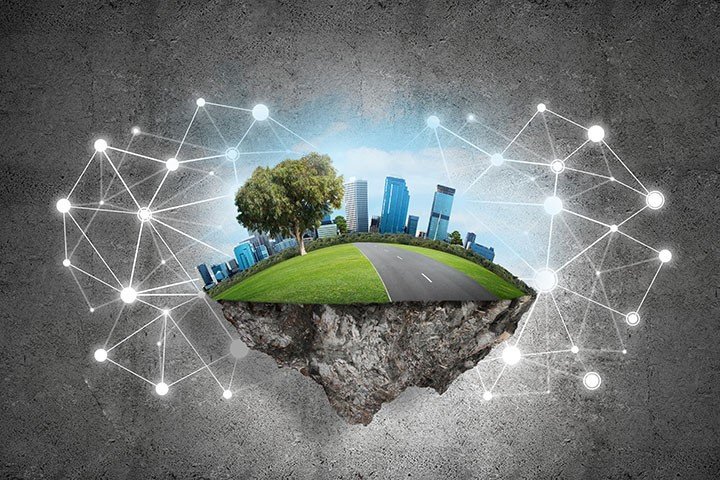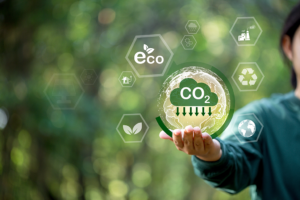The construction industry is constantly changing, but a new wave is emerging that offers both beautiful architecture and a sustainable future: green buildings. As people become increasingly concerned about the environment, the construction industry is taking on the task of reducing the carbon footprint and creating buildings that blend in with nature.
Use Environmentally Friendly Materials
The use of sustainable materials is one of the most important parts of green building. Traditionally, the materials used in buildings require large amounts of resources and damage the earth by cutting down trees. That said, green building encourages the use of eco-friendly materials such as bamboo, recycled steel, and scrap wood. These materials not only have a smaller impact on the world but also help reduce a building’s energy consumption.
Energy Saving Design
When it comes to green buildings, energy-saving design is very important. Doing this requires a combination of technologies, such as solar panels, HVAC systems that use less energy, and smart building controls. For green buildings, using renewable energy not only reduces the use of non-renewable energy but also helps reduce costs over time.
Take Measures to Save Water
Water shortage is a problem worldwide. Green buildings solve this problem by using creative ways to save water. This includes installing low-flow plumbing fixtures, rainwater collection systems, and surfaces that allow water to seep into the ground and replenish the water table. These projects not only help protect water supplies but also make water infrastructure more sustainable and sustainable.
Bringing Biodiversity Together
Green building does not only focus on the built environment; it also takes into account the environment around the building. Adding nature-friendly green spaces, roof gardens and landscaping to construction projects can help increase biodiversity. This not only provides a habitat for local flora and fauna but also makes the community healthier overall.
Education and Community Involvement
Community involvement and mentorship are important components of green building. Local groups are often involved in project decisions and educational programs are used to create greater awareness of the benefits of using sustainable construction methods. This not only gives community residents a sense of ownership but also helps more people understand the importance of environmentally friendly construction.
How Green Buildings Impact the Economy?
Green buildings are not only good for the environment but also to a large extent for the economy. As companies and governments become more aware of the importance of sustainable development, green construction projects are becoming increasingly popular around the world. This move towards a more environmentally friendly approach creates new jobs and contributes to economic growth.
Creating Jobs in the Green Economy
Green construction projects require workers who understand sustainable design, renewable energy systems, and construction methods that are good for the planet. As the number of green buildings increases, there is an increasing demand for skilled workers in areas such as construction, engineering, and renewable energy. This in turn leads to lower unemployment and a stronger labor market.
New Ideas and Technological Improvements
A commitment to green building drives new ideas and better technology in the construction industry. Scientists and engineers are always looking for new building materials, methods, and tools that use less energy. This innovative thinking not only makes construction projects more efficient and sustainable but also contributes to the development of related industries.
Provide Financing and Investments
Investors and financial groups are increasingly interested in green construction projects. As sustainability becomes a more important factor in investment choices, projects that meet green building standards are more likely to receive financing. This influx of funds not only helps complete individual projects but also contributes to overall economic growth in the locations where these projects are located.
Save Money in the Long Run
At first glance, green building technologies may seem more expensive, but in the long run, they can save a lot of money. Lower electricity bills, lower maintenance costs, and a longer lifespan are all benefits of buildings that use less energy. This economic benefit benefits both the building owners and the users of the building. It creates a positive economic cycle that makes people willing to invest more in green buildings.
Conclusion
In short, green buildings are not only good for the environment but also contribute to economic growth. The construction industry can help make the future more sustainable and successful by using environmentally friendly materials, designing buildings that use less energy, taking steps to save water, integrating biodiversity, and involving people in their projects. As the number of green buildings grows around the world, it is clear that the economic benefits are just as important as the environmental benefits. This makes green buildings an important part of making tomorrow a better place.
FAQs
1. What does ‘green building’ actually mean?
Green construction, also called sustainable or environmentally friendly construction, refers to planning, constructing, and operating buildings in a way that is good for the planet. This includes using environmentally friendly materials, designing in an energy-efficient manner, and focusing on minimizing the impact on the planet.
2. What are the environmental benefits of green buildings?
Green building is better for the planet because it uses fewer resources, produces less waste, and uses less energy. In addition, it protects wildlife, saves water, and reduces environmental damage caused by traditional construction methods.
3. How much more does a green construction project cost than a regular construction project?
While green buildings may cost more initially, the cost savings (such as lower energy and maintenance costs) often make up for this in the long run. Green methods are also becoming increasingly popular, causing costs to slowly decrease.
4. What can people do to help with green building practices?
People can help by improving their homes with environmentally friendly materials, installing energy-saving appliances, and supporting local construction projects that benefit the environment. Added up, small changes can have major consequences.
5. Can green building standards be added to existing buildings?
Yes, green building concepts can be added to existing buildings. This could mean adding better insulation, setting up systems that use less energy, and taking steps to conserve water.
6. How do green buildings improve the health of those who live or work in them?
Green buildings use low-emission materials, improve ventilation, and let in as much natural light as possible to make indoor spaces healthier. This makes construction workers healthier and more productive.



